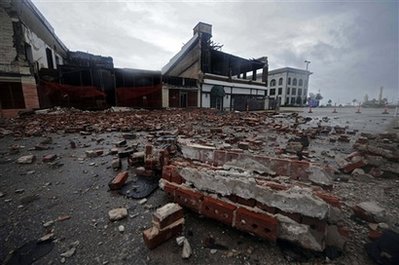Let’s assume the worst: a major storm has hit your community and caused extensive damage. Thanks to your emergency response plan, people are sheltered and out of harm’s way. But now what?
Everybody wants things to quickly go back to normal, but this isn’t always possible. Few communities have sufficient resources for large-scale reconstruction efforts. Most also lack at least some of the necessary technical expertise to do it correctly. In addition to these obvious challenges, there is the complex web of regulations, permitting, and planning that your community must navigate to make sure that rebuilding happens in a way that is safe and legal and reduces the chances of a similar event causing damage in the future.
The best way for your community to get back on its feet and back to business is to work together with all interested parties. Ed Thomas, Esq. (of the Michael Baker Corporation) developed an approach to post-disaster recovery while serving as the President’s representative in Iowa following the Great Midwest Floods of 1993. As he explains:
“We must all work together to bring about successful, safe redevelopment . . . To achieve this goal of safety, we must utilize what can be called a “Patchwork Quilt” approach. This concept is based on the American idea that one or more persons can turn scraps of “this and that” into a useful, warm, and very valuable object.”
The Patchwork Quilt concept is simple: while no one person or agency can safely rebuild a community, working together, we can. Ed Thomas and others have continued to hone and refine this approach, and have created a useful and impressive document outlining how communities can muster all available resources after a storm. This section of the site (currently under development) is based on their work.
Download the Patchwork Quilt (PDF, 1.2MB).
For property-level (as opposed to community-level) recovery, see FEMA’s Recovering From and Coping With Flood Damaged Property.
